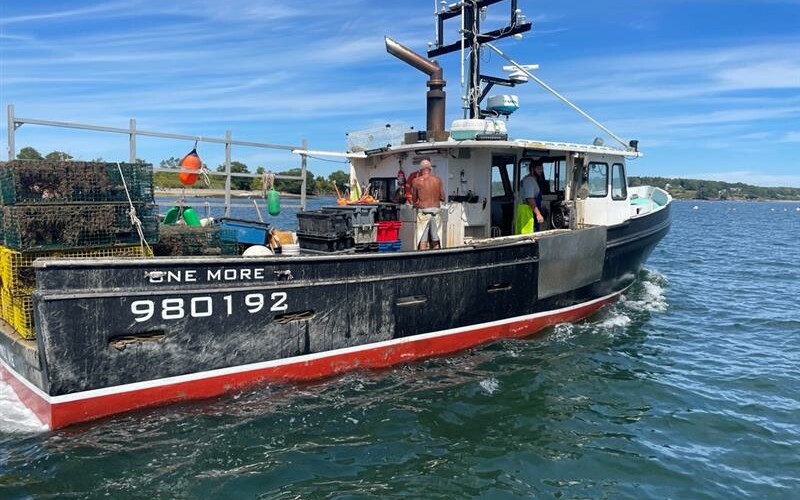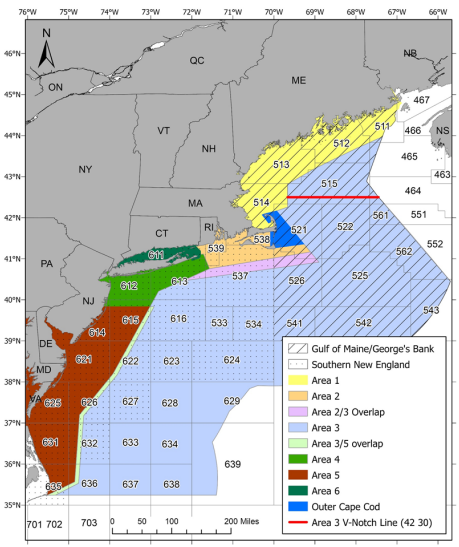Lobstermen could face new size limits for catch - National Fisherman
March 28, 2023

The Maine lobster fishery could see new changes in 2024 to the size of "keepers," with the previous allowed size of catch being between 3 ¼ to 5 inches, measuring from the eye to the tail. This would change the current standard by a fraction of an inch in only certain fishing zones.
The Atlantic States Marine Fisheries Commission (ASMFC) is considering the change due to the lack of baby lobsters in New England waters.

This new regulation could provide the species a chance to reproduce more and grow at a larger rate than what scientists are seeing currently. Since 2012, the research that scientists have done has found a below average number of juvenile lobster in the Gulf of Maine and Georges Bank areas. This research not only showed the decline, but also provided scientists with the ability to track populations and potentially predict future landings.
Since 2018, surveys showed decline to all lobster stock in the Gulf of Maine and Georges Bank. New Hampshire surveys showed interannual variations of stock but increased stock in 2021. Massachusetts showed growth in 2021 compared to the previous two years but was still below the 75th percentile of stock.
In 2022, the state of Maine brought in 98 million pounds of lobster which at the time was worth about $389 million. Though Maine is the top producer of lobster, scientists have showed the complications of varying regulations in surrounding states and Canada. These regulations affect the process of managing the population of lobster in all waters of the Northeast.
These potential decreases could dramatically affect the economy. As the lobster fishery is the center of many jobs including the actual fishers, tourism, and the backbone to coastal communities in New England, but more crucially to all coastal communities in Maine alone.
Lobsters migrate into offshore waters over the winter after shedding in warmer inshore waters in the summer, but with the increase of temperatures it is hard to say what that will do to the migration and further the stock of this species. However, the calculated depth of water did not show an effect on levels of growth according to the scientific surveys.
Scientists from ASMFC have found possible connections to the larval food supply, such as copepods, and believe that the decrease in stock of lobsters is linked to this zooplankton populations, which also show significant declines in stock.
Copepods are small aquatic crustaceans and are one of the main food sources for lobster post larvae. (This was the only zooplankton correlation found in relation to lobster population.)
The commission is looking at potential implementation of consistency of measures within the Gulf of Maine, Georges Bank and the rest of southern New England. Those could substantially could not only help the population of lobsters, but help with stock boundaries, interstate shipments of lobsters, and improve enforcement.
Some potential changes:
- Stock boundaries are mostly affected in Massachusetts and Rhode Island where boats may be permitted to fish multiple areas that span multiple lobster stocks.
- Straightforward shipping of lobster across state lines to eliminate the complication of different sizes kept from different areas; and a standardized measure for acceptable keeper size of lobster through the whole supply chain and fishermen.
- Improving enforcement would further implement the use of one standardized measure among all areas and zones.
There is worry that continuing the variety of measures could further weaken the populations of lobster in all areas in New England. Whether changing to a standard measure could benefit the stock and sustainability of the industry is something that is being further explored by ASMFC and scientists.
This would further make the US and Canada trade more complicated, but benefit an industry that is crucial to the economy in Maine, Massachusetts and the rest of Southern New England.
Read the full draft of Increasing Protection of the Gulf of Maine/ Georges Bank Spawning Stock by the Atlantic State Marine Fisheries Commission here.
Comments
Post a Comment